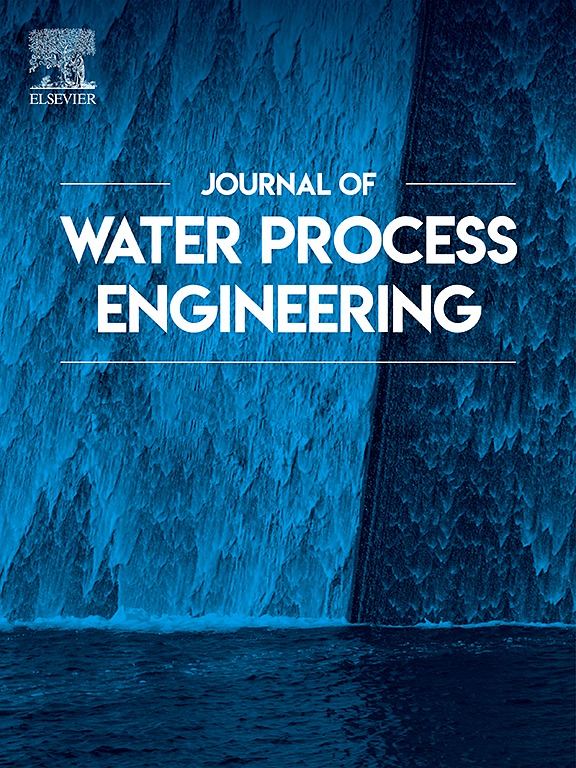Optimized photocatalytic degradation of 2-naphthol using ZnO/rGO nanocomposites synthesized from palm kernel shell waste
IF 6.3
2区 工程技术
Q1 ENGINEERING, CHEMICAL
引用次数: 0
Abstract
The widespread use of 2-naphthol in various industries, coupled with its high toxicity and persistence as an organic pollutant, necessitates effective degradation methods. This study synthesized ZnO/reduced graphene oxide (rGO) nanocomposites (NCs) via a hydrothermal method for photocatalytic degradation of 2-naphthol. Graphene oxide (GO), derived from palm kernel shell waste through a modified Hummers method, was reduced to rGO using N,N-Dimethylformamide (DMF), which also facilitated ZnO nanomaterial formation on GO. Given the growing environmental concerns associated with hazardous pollutants, the development of such nanocomposites represents a promising advancement in photocatalytic technology for sustainable remediation. The GO loading was optimized to enhance performance, with results showing improved surface area and adsorption capacity. ZnO/rGO NCs with 10 % GO loading (ZR(10)) achieved 95 % 2-naphthol degradation after 120 min of irradiation, outperforming pure ZnO and other ZR NCs. ZR(10) retained 67.7 % activity after three reuse cycles, with a second-order kinetic rate constant of 0.0115 h−1. Additionally, the catalyst maintained its ZnO crystal structure, demonstrating excellent stability. A potential degradation mechanism of 2-naphthol by ZR(10) is proposed. This study highlights the eco-friendly use of palm kernel shell waste as a carbon precursor and underscores the potential of ZnO/rGO as efficient photocatalysts for environmental remediation.

求助全文
约1分钟内获得全文
求助全文
来源期刊

Journal of water process engineering
Biochemistry, Genetics and Molecular Biology-Biotechnology
CiteScore
10.70
自引率
8.60%
发文量
846
审稿时长
24 days
期刊介绍:
The Journal of Water Process Engineering aims to publish refereed, high-quality research papers with significant novelty and impact in all areas of the engineering of water and wastewater processing . Papers on advanced and novel treatment processes and technologies are particularly welcome. The Journal considers papers in areas such as nanotechnology and biotechnology applications in water, novel oxidation and separation processes, membrane processes (except those for desalination) , catalytic processes for the removal of water contaminants, sustainable processes, water reuse and recycling, water use and wastewater minimization, integrated/hybrid technology, process modeling of water treatment and novel treatment processes. Submissions on the subject of adsorbents, including standard measurements of adsorption kinetics and equilibrium will only be considered if there is a genuine case for novelty and contribution, for example highly novel, sustainable adsorbents and their use: papers on activated carbon-type materials derived from natural matter, or surfactant-modified clays and related minerals, would not fulfil this criterion. The Journal particularly welcomes contributions involving environmentally, economically and socially sustainable technology for water treatment, including those which are energy-efficient, with minimal or no chemical consumption, and capable of water recycling and reuse that minimizes the direct disposal of wastewater to the aquatic environment. Papers that describe novel ideas for solving issues related to water quality and availability are also welcome, as are those that show the transfer of techniques from other disciplines. The Journal will consider papers dealing with processes for various water matrices including drinking water (except desalination), domestic, urban and industrial wastewaters, in addition to their residues. It is expected that the journal will be of particular relevance to chemical and process engineers working in the field. The Journal welcomes Full Text papers, Short Communications, State-of-the-Art Reviews and Letters to Editors and Case Studies
 求助内容:
求助内容: 应助结果提醒方式:
应助结果提醒方式:


